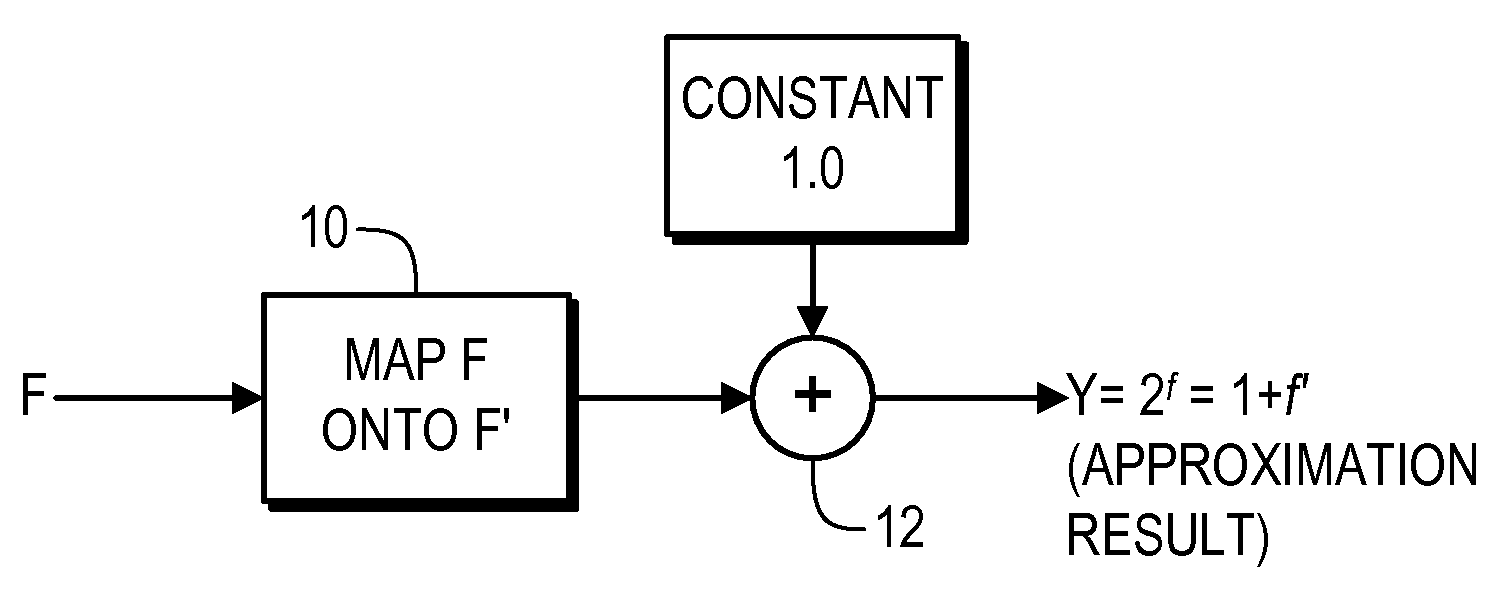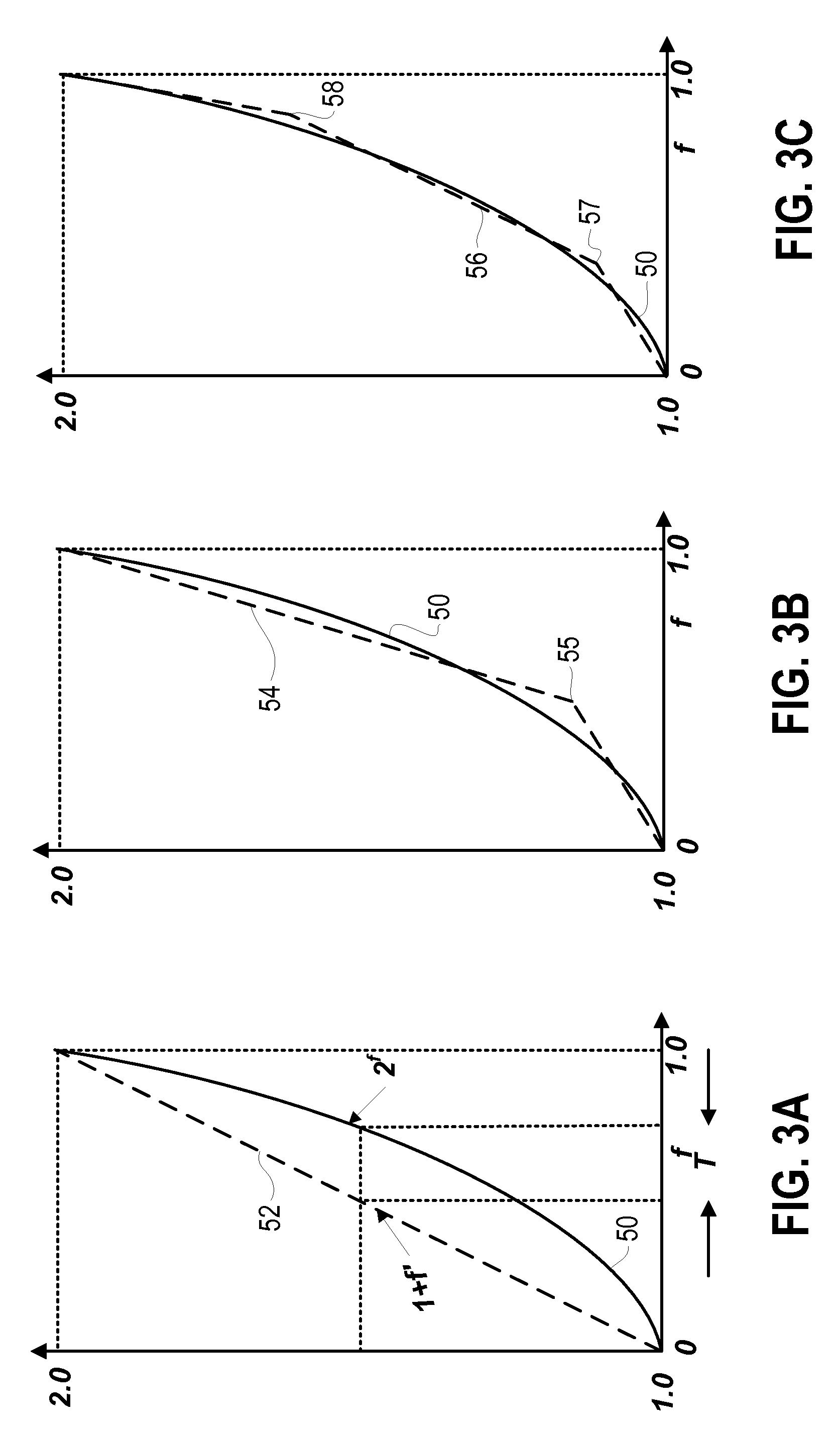Digital Implementation of Fractional Exponentiation
- Summary
- Abstract
- Description
- Claims
- Application Information
AI Technical Summary
Benefits of technology
Problems solved by technology
Method used
Image
Examples
Embodiment Construction
)
[0017]The present invention provides a simple method of digitally approximating the value of base 2 raised to a fractional exponent with relatively high accuracy, and can be implemented so as to not require any look-up table at all, thereby offering significant savings in resource utilization. In addition, this technique is applicable to exponentiation of any other non-binary base as well, simply by using a pre-computed scaling factor on the exponent, as described above.
[0018]As shown in FIG. 1, in representative embodiments of the invention, the digital exponentiation operation 2f is approximated with a digital implementation of (1+f′), where the correct value of f′ to minimize the 2f approximation errors is found by manipulating the bits (F) representing the fractional exponent, f. Initially, in module 10, F (the bit-string representation of f) is transformed to a bit string F′ (which corresponds to f′). In module 12, the output is combined with the binary representation of 1 (ty...
PUM
 Login to View More
Login to View More Abstract
Description
Claims
Application Information
 Login to View More
Login to View More - R&D
- Intellectual Property
- Life Sciences
- Materials
- Tech Scout
- Unparalleled Data Quality
- Higher Quality Content
- 60% Fewer Hallucinations
Browse by: Latest US Patents, China's latest patents, Technical Efficacy Thesaurus, Application Domain, Technology Topic, Popular Technical Reports.
© 2025 PatSnap. All rights reserved.Legal|Privacy policy|Modern Slavery Act Transparency Statement|Sitemap|About US| Contact US: help@patsnap.com



